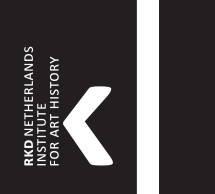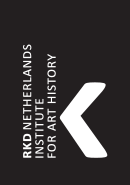2. Introduction to Gerson’s Chapter on Poland
Rieke van Leeuwen
Many art historians who have immersed themselves in art related to Holland and Flanders have a soft spot for Gerson’s Ausbreitung. If this survey work of more than 600 pages and almost no illustrations looks inaccessible, it is because it is a book intended for the initiated. As Gerson himself observed in his introduction of 1942, the many names that pass in review in the telling of his story make great demands of the visual memory of the reader because they assume familiarity with the style and approach of most Dutch and important non-Dutch artists. The reader is left to use handbooks and lexicons to look up the literature, assuming he or she does not already know most of it by heart.
To sketch the main lines of his story, Gerson omitted all information that was not strictly essential. According to him it made little sense ‘to present the patient reader with the well organized and unabbreviated contents of an index file of around 5,000 cards’.1 It certainly would have made our task a great deal easier if we had been able to consult such a file. However, our enquiries addressed to Bert Meijer, director of the Dutch University Institute for Art History in Florence from 1976 until 2008 and editor of the amplified 1983 reprint of Gerson’s book, were in vain. Nor was Edward Grasman, Gerson’s biographer, able to find reference material pertaining to the Ausbreitung. Even so, it proved possible to reconstruct Gerson’s search in the sources, an arduous art historical exercise that was largely carried out by Sander Erkens, research assistant of the Gerson Project. Various publications used by Gerson were not to be found in the library of the RKD or the KB (Royal Library, The Hague) and had to be acquired.
Only after this quest could we truly judge Gerson’s text on its merits, and it turned out to be even more accomplished than we already thought. Gerson often had to make do with snippets of archival information or notes to an obscure article, and yet he was able to assemble the fragments into a detailed picture that still holds its own in the light of new supplementary information. The talent and intuition that he demonstrated while assembling data, remain unequalled. That he sometimes went beyond his evidence or committed a minor error detracts only little from his achievement. As far as we are concerned, his pioneering work fully deserves the attention that we give it here, and it can only become the foundation for continued art-historical research if it is placed online in translated, illustrated and annotated form.

Horst Gerson in his study in the Stalpertstraat, The Hague
This initiative is essential to bridge the seven decades that separate us from Gerson’s Herculean publication. The much broader, largely English-speaking international art-historical community of today has come to rely on images in preference to texts. The present publication forms a synthesis of both traditions.
Despite the great detail of Gerson’s work, he was forced to ignore several important topics. His publication was a price-winning submission to a competition issued in 1937 by a body called Teylers Tweede Genootschap (Teyler’s Second Society), which obliged him to limit himself to the questions posed by this body, namely:
Required is a study of the expansion of 17th-century Dutch painting, specifically a documented overview of the influence that the art of painting of that time exerted with respect to subject matter, conception, composition, style, color and technique on those of other countries.2
In this context the following questions must be addressed:3
1e. residence of foreign painters in Holland
2e. residence of Dutch painters abroad
3e. the export of Dutch painting to other countries by way of agents or the art trade.
This commission brought with it a number of limitations. The export of graphic art and the rise of reproductive engravings after Dutch paintings abroad remained outside the research parameters. On the other hand, Gerson was required to treat all artists who travelled to and from the Dutch Republic, which in his opinion too often failed to yield useful information with respect to the dispersal and after-effect of Dutch painting of the 17th century.4

